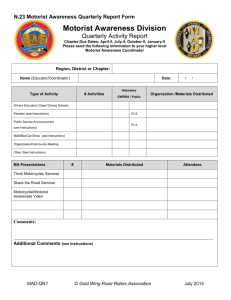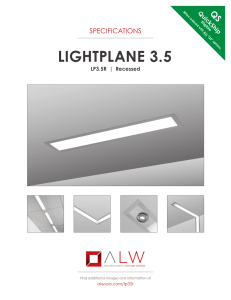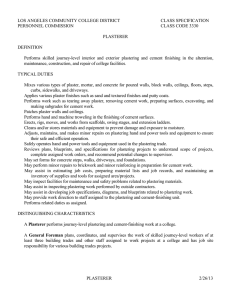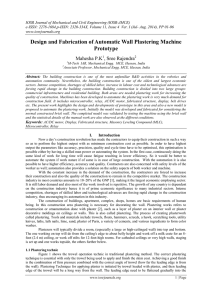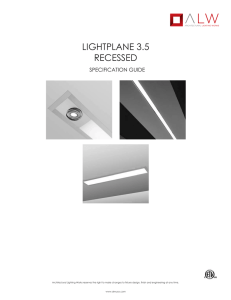Bricklaying & Plastering Theory N2 Exam Paper
advertisement
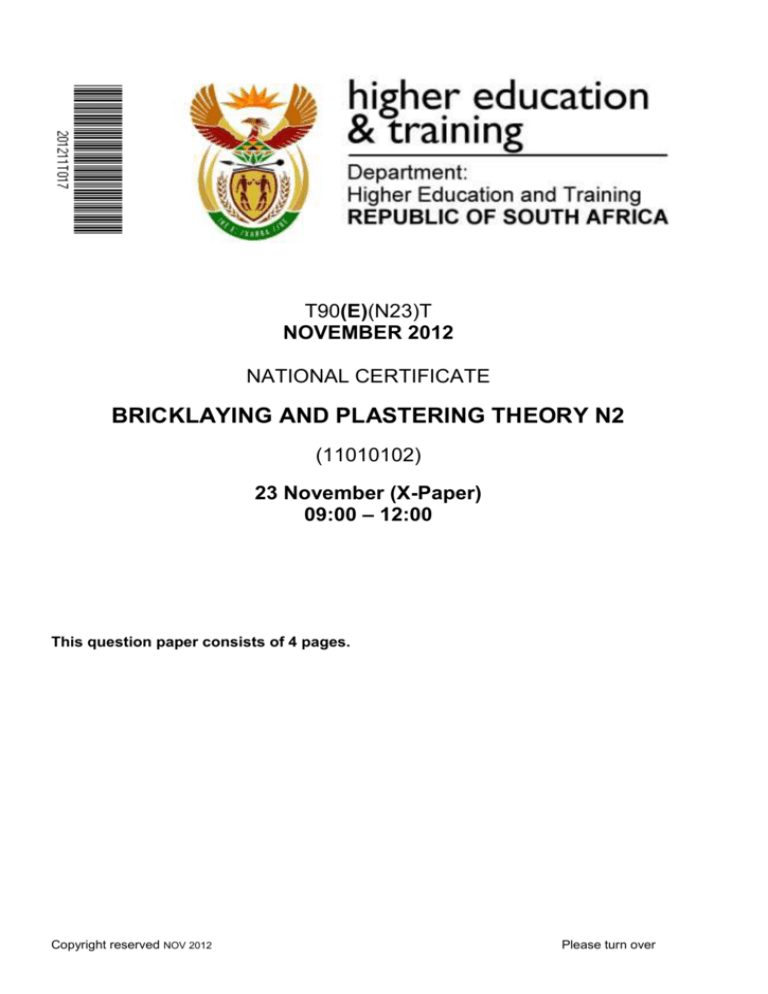
T90(E)(N23)T NOVEMBER 2012 NATIONAL CERTIFICATE BRICKLAYING AND PLASTERING THEORY N2 (11010102) 23 November (X-Paper) 09:00 – 12:00 This question paper consists of 4 pages. Copyright reserved NOV 2012 Please turn over (11010102) -2- T90(E)(N23)T DEPARTMENT OF HIGHER EDUCATION AND TRAINING REPUBLIC OF SOUTH AFRICA NATIONAL CERTIFICATE BRICKLAYING AND PLASTERING THEORY N2 TIME: 3 HOURS MARKS: 100 ________________________________________________________________________ INSTRUCTIONS AND INFORMATION 1. Answer ALL the questions. 2. Read ALL the questions carefully. 3. Number the answers correctly according to the numbering system used in this question paper. 4. Write neatly and legibly. Copyright reserved NOV 2012 Please turn over (11010102) -3- T90(E)(N23)T QUESTION 1 1.1 Name FOUR different types of metal lathing. (4) 1.2 Define the term fire brick. (2) 1.3 Name FIVE places where fire bricks are normally used. (5) 1.4 Briefly describe how plaster board is manufactured. (9) [20] QUESTION 2 2.1 Define the terms coping and caps. (4) 2.2 Name THREE materials that can be used for copings. (3) 2.3 Define the term terrazzo. (3) 2.4 Briefly describe how a terrazzo screed is laid. (10) [20] QUESTION 3 3.1 Briefly describe the method used to construct a running mould. (15) 3.2 Name FIVE external factors that may cause a chimney to smoke. (5) [20] QUESTION 4 Draw to scale 1:10, the alternate plan courses of one-and-half brick corner in Flemish bond. Copyright reserved NOV 2012 Please turn over [20] (11010102) -4- T90(E)(N23)T QUESTION 5 5.1 Define the term cavity wall. (2) 5.2 State FOUR advantages of using a cavity wall compared with a solid outside wall. (4) 5.3 Draw to scale 1:10, a vertical section through the bottom 10 courses of a 270 mm cavity wall. Show the detail below: The bottom 8 courses Concrete strip foundation 600 mm x 200 mm Cavity wall Hardcore 75 mm Floor slab 75 mm Screed 20 mm Internal plaster 15 mm Damp proof course External ground level (14) [20] TOTAL: Copyright reserved NOV 2012 Please turn over 100
